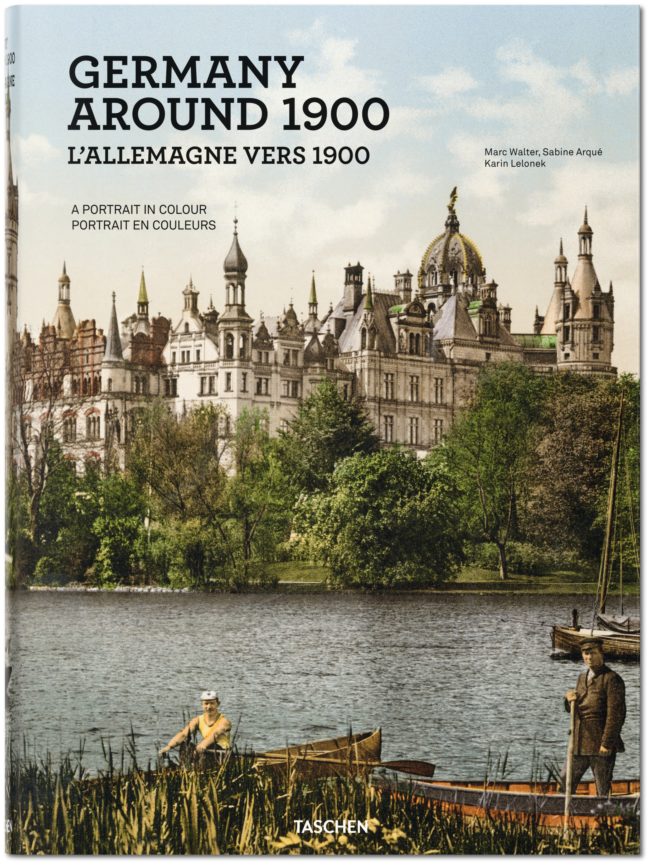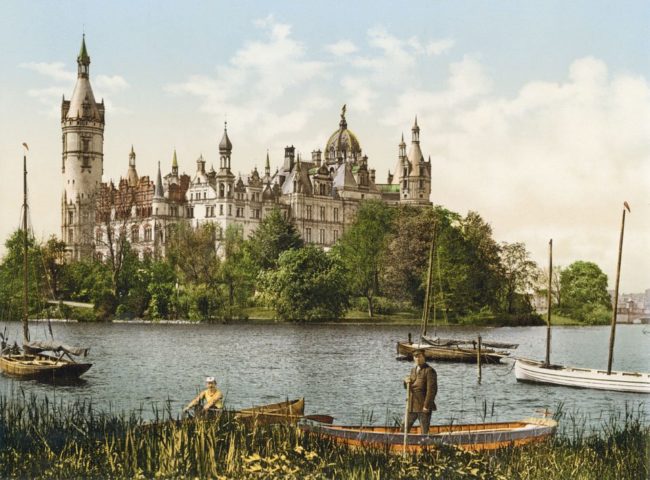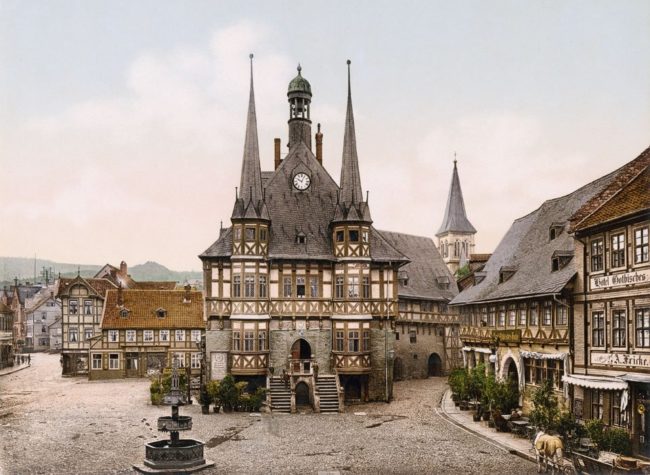Before its devastating (and fortunately temporary) downfall in the wake of World War II, Germany was a monument to opulence, cosmopolitanism, and profound patriotism. At the turn of the twentieth century, it seemed as though nothing but promise was on the horizon.
In a newly released book aptly titled Germany Around 1900, photo archivists, authors, and curators collaborated to give us a glimpse into that sense of promise in a series of stunning images.
The collaborators who worked on this project did so with the hope of conveying a sense of nostalgia for a country that was ultimately dragged to its lowest point just a few decades after these photographs were taken.
These images were brought to life through the process of photochrome, and the pictures in this publication were collected by editor Marc Walter, who happens to have one of the largest photochrome collections in the world.
Scherwin, Grand Ducal Palace, East Side
The book contains more than 800 breathtaking shots, each of which transports readers back to a shining moment in German history.
Cathedral and Frederick Bridge
According to the publisher, this book “presents turn-of-the-century Germany as it liked to see herself: self-confident, glittering, patriotic, but also with a belief in progress.”
Wernigerode, Town Hall
In 1900, Germany sat in the liminal space between tradition and progress. These images deftly capture this period of transition by showcasing towering statues and medieval towns alongside images of advancement on bustling boulevards in the most cosmopolitan cities.
Basei Bridge as seen from Ferdinandstein Rock
The book’s objective is simply to create “a fascinating and nostalgic panorama of a lost epoch before the ravages of time and history set in.”
Rheinstein Castle Near Trechtingshausen
(source: Taschen)
We typically store our thoughts on history in a series of images, so the approach taken by these collaborators is more than fitting. With the creation of Germany Around 1900, these authors and editors effectively rewrite the visual histories that we have so deeply embedded in our minds.
To learn more about the book and to purchase a copy for yourself, head over to Taschen’s website.





